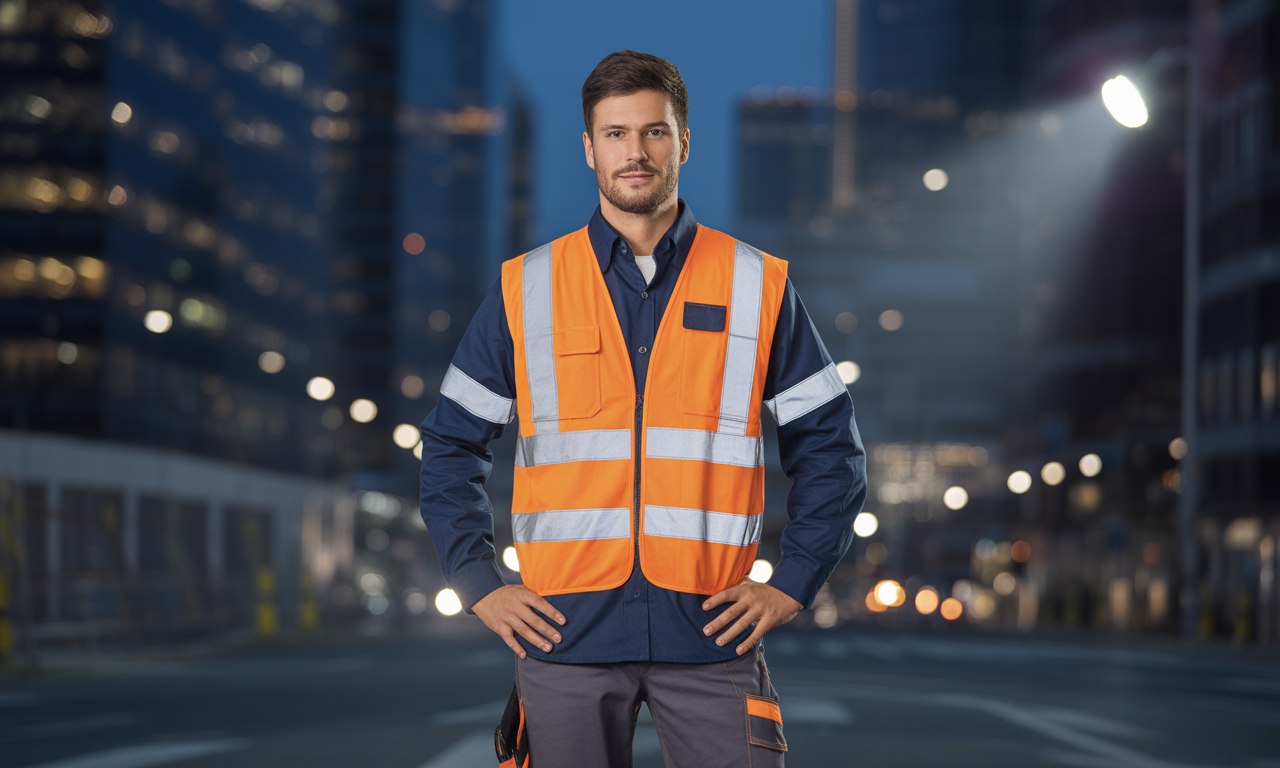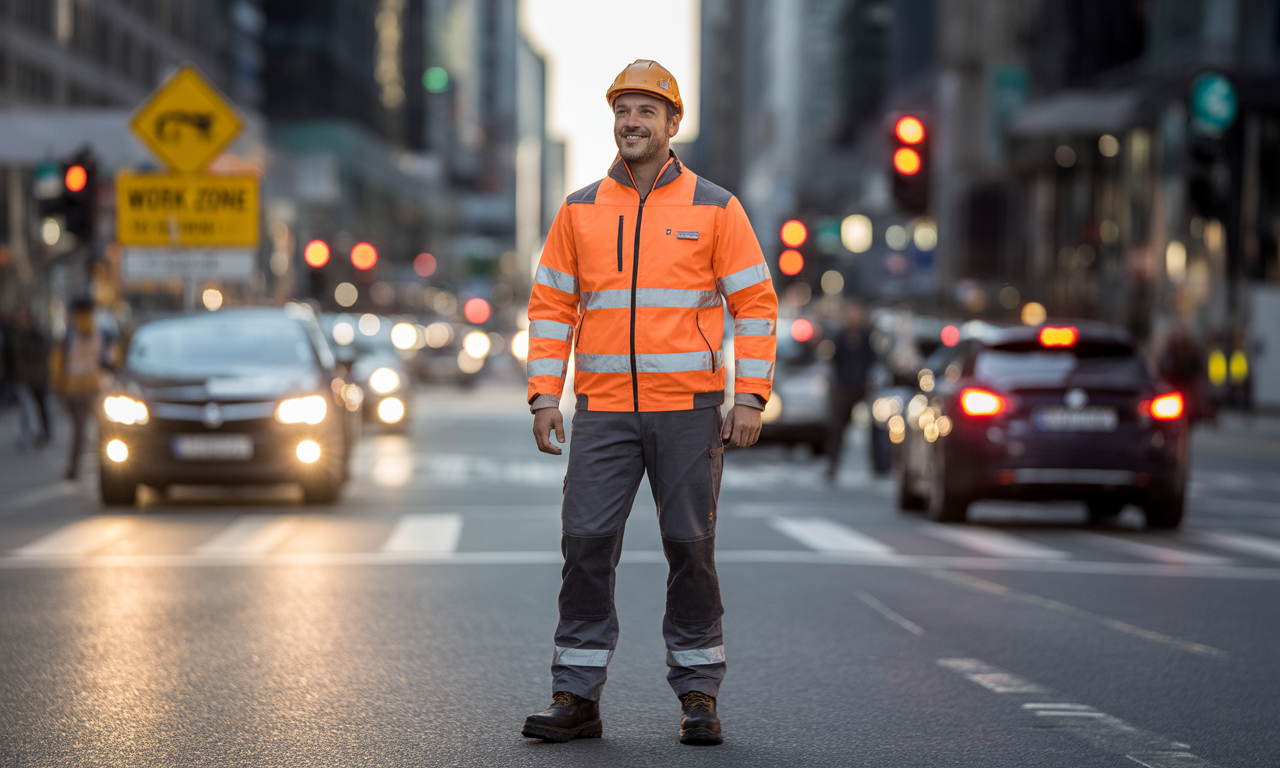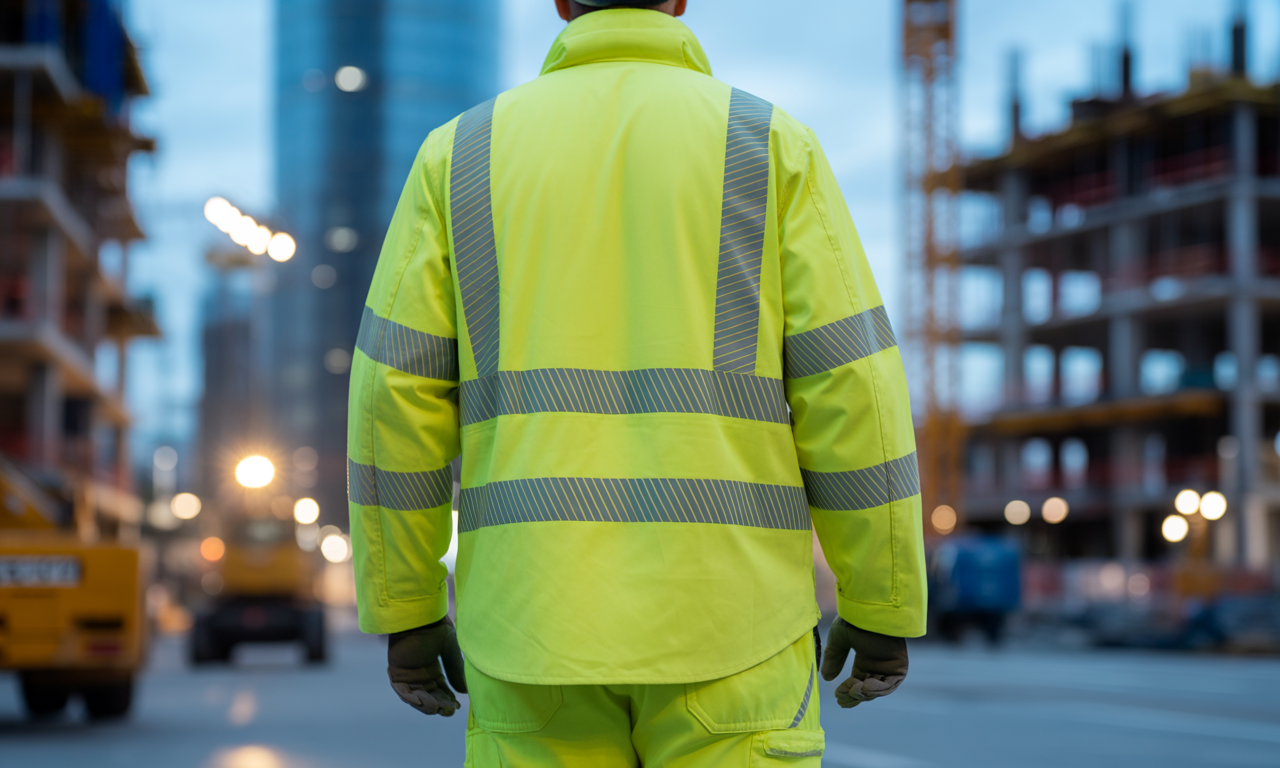Stay Seen, Stay Safe: The Latest in Reflective Workwear Clothing and High-Visibility Standards for May 2025
 Introduction
Introduction
In the dynamic and often hazardous environments of modern industries, the safety of workers remains paramount. As of May 2025, the emphasis on high-visibility (hi-vis) workwear and reflective clothing has never been stronger. These specialized garments are not mere accessories; they are critical pieces of Personal Protective Equipment (PPE) designed to save lives by ensuring workers are conspicuous in all lighting conditions and against complex backgrounds. From bustling construction sites and dimly lit warehouses to the perilous edges of roadways and emergency response scenes, the ability to be seen can be the difference between a near miss and a tragic accident.
The Evolution of High-Visibility Standards: Staying Ahead in 2025
High-visibility standards are not static; they evolve in response to new research, technological advancements, and unfortunate lessons learned from workplace incidents. As of May 2025, the guiding principles for hi-vis workwear continue to be shaped by international and regional standards such as ANSI/ISEA 107 (in the United States) and EN ISO 20471 (in Europe).
Key developments and points of emphasis in 2025 include:
Increased Focus on Risk Assessment: Standards are increasingly pushing for a more thorough risk assessment to determine the appropriate class and type of hi-vis garment. This means not just considering the work environment (e.g., road traffic speed, complexity of background) but also specific task-based risks.
Emphasis on Full Body Coverage: While hi-vis vests are a common sight, there’s a growing understanding and regulatory push towards garments that offer more comprehensive body coverage, especially for workers in high-risk scenarios. This includes long-sleeved shirts, trousers, and coveralls, ensuring visibility from all angles and in various body positions.
Durability and Longevity of Fluorescent and Retroreflective Materials: The 2025 standards place a greater emphasis on the durability of hi-vis materials. This includes how well the fluorescent background material maintains its color after prolonged UV exposure and repeated washing, and how effectively retroreflective tapes retain their reflectivity over the garment’s lifespan. Manufacturers are responding with more robust materials and clearer guidelines on garment care and replacement.
Consideration of “Low Light” vs. “No Light”: A clearer distinction is being made in the application of fluorescent (effective in daylight and low light, like dawn/dusk) and retroreflective materials (effective in no light, when a light source is shone on them). This helps in specifying garments that provide optimal protection across a full 24-hour cycle and varying weather conditions.
Integration with Other PPE: There’s a growing trend towards designing hi-vis workwear that seamlessly integrates with other forms of PPE, such as fall arrest harnesses or flame-resistant (FR) clothing, without compromising the visibility or the protective qualities of either. This often means hi-vis FR garments or specially designed hi-vis harnesses.
Human Factors and Comfort: Recognizing that uncomfortable gear is less likely to be worn correctly or consistently, standards and manufacturers are paying more attention to ergonomics, breathability, and the overall comfort of hi-vis clothing. Lighter, more flexible materials and designs that allow for better heat management are becoming prevalent.
Staying updated with the specific clauses of the latest revisions of ANSI/ISEA 107 or EN ISO 20471, relevant to your region and industry, is crucial for compliance and ensuring optimal worker safety in May 2025.
Key Features of Modern Reflective Workwear: Beyond Brightness
The effectiveness of reflective workwear hinges on several critical components that work in tandem:
Fluorescent Background Material: This is the brightly colored fabric (typically yellow-green, orange-red, or red) that enhances visibility during daylight hours. The fluorescence absorbs UV light from the sun and re-emits it as visible light, making the garment appear brighter than surrounding objects. In May 2025, the quality and colorfastness of these materials are rigorously tested to ensure they don’t fade quickly, diminishing their effectiveness.
Retroreflective Tapes/Strips: These are the silver or patterned tapes that shine brightly when hit by artificial light sources, such as vehicle headlights, in low-light or nighttime conditions. They work by reflecting light directly back towards its source.
Glass Bead Technology: Still common, these tapes contain tiny glass beads that reflect light.
Microprismatic Technology: Increasingly popular, these tapes use microscopic prisms to reflect light more efficiently and often offer better performance in wet conditions and at wider angles. They are also typically more durable.
Contrast Materials: Some hi-vis garments incorporate darker colored materials in areas prone to soiling, like cuffs and hems. This helps maintain a cleaner appearance for the fluorescent parts of the garment, ensuring they remain effective for longer. The placement of contrast material must not significantly detract from the overall required area of fluorescent material.
Design and Configuration: The placement and width of retroreflective tapes are critical. Standards dictate minimum surface areas for both fluorescent and retroreflective materials, as well as specific configurations (e.g., bands around the torso, sleeves, and legs) to ensure 360-degree visibility and to help define the human form. Designs in 2025 often incorporate segmented or perforated reflective tapes for enhanced flexibility, breathability, and comfort without sacrificing reflectivity.
Garment Classes: Standards like ANSI/ISEA 107 define different garment classes (e.g., Class 1, 2, 3, and Class E for trousers) based on the amount of visible background material and retroreflective tape.
Class 1: For workers in areas well separated from traffic or where traffic speeds don’t exceed 25 mph.
Class 2: For workers who need greater visibility in poor weather or near traffic exceeding 25 mph.
Class 3: For workers exposed to high-speed traffic, complex backgrounds, or who need to be conspicuous through a full range of body motions at a minimum of 1,280 feet. This offers the highest level of visibility.
-
- Class E: Hi-vis trousers, shorts, or gaiters that, when worn with a Class 2 or Class 3 top, achieve an overall Class 3 ensemble rating.
Technological Advancements: The Smart Revolution in Reflective Clothing
The reflective workwear landscape in May 2025 is not just about brighter colors and more reflective tapes; it’s increasingly about intelligent design and integrated technology:
- LED Integration: Active illumination through embedded LEDs (Light Emitting Diodes) is becoming more refined and accessible. These can be set to steady or flashing modes, significantly boosting visibility, especially in situations where ambient light for retroreflection is minimal. Modern designs focus on lightweight, durable, and waterproof LED systems with long battery life or rechargeable options.
- Smart Fabrics and Wearable Tech: While still an emerging area, research and development are pushing towards hi-vis garments with integrated sensors. These could potentially monitor a worker’s biometrics (heart rate, temperature), detect falls, or even sense environmental hazards like gas leaks. The challenge lies in making these technologies robust, unobtrusive, and cost-effective for widespread adoption.
- Improved Material Science:
- Enhanced Durability: Manufacturers are constantly innovating with fabrics that offer better resistance to abrasion, tearing, and fading, extending the useful life of the garment.
- Superior Washability: Reflective materials are being engineered to withstand more industrial wash cycles without significant degradation of their fluorescent or retroreflective properties.
- Eco-Friendly Options: There’s a growing demand for sustainable hi-vis workwear made from recycled materials or through more environmentally friendly manufacturing processes.
- Photoluminescent Materials: Some garments incorporate photoluminescent (glow-in-the-dark) elements. These materials absorb light energy and then slowly release it in the dark, providing an additional layer of visibility, especially useful in sudden power outages or enclosed dark spaces before external light sources can activate retroreflective tapes.
Choosing the Right High-Visibility Workwear: A Needs-Based Approach
Selecting the correct hi-vis workwear for May 2025 involves a careful assessment of specific needs:
Job Role and Risk Level:
Construction Workers: Often require Class 2 or Class 3, especially if working near roadways or heavy machinery. Durability is key.
Road Maintenance Crews: Almost exclusively Class 3 due to high-speed traffic exposure. Garments for all weather conditions are essential.
Emergency Responders: Need high-level visibility (Class 2 or 3) often combined with FR properties or specific designs for easy identification (e.g., color-coding for different roles).
Warehouse/Logistics Staff: May require Class 1 or 2, depending on vehicle traffic within the facility. Comfort and freedom of movement are important.
Utility Workers: Often need specialized hi-vis gear that might also be arc-rated or flame-resistant.
Work Environment:
Daytime vs. Nighttime: Ensure garments have adequate fluorescent material for daytime and high-quality retroreflective material for nighttime.
Weather Conditions: Consider waterproof, windproof, or breathable options. Winter gear will need insulation, while summer gear should be lightweight and moisture-wicking.
Background Complexity: In visually complex environments, a higher class of garment is needed to ensure the worker stands out.
Regulatory Compliance: Always ensure the selected workwear meets or exceeds the requirements of the relevant local and national standards (e.g., ANSI/ISEA 107, EN ISO 20471, CSA Z96 in Canada). Look for labels indicating compliance.
Comfort and Fit: Ill-fitting or uncomfortable clothing can be a hazard itself, as workers may be tempted to modify it or not wear it properly. Opt for garments that allow a full range of motion, are appropriately sized, and are made from breathable fabrics. Consider gender-specific fits where available.
Durability and Maintenance: Choose garments that can withstand the rigors of the job and can be easily cleaned according to the manufacturer’s instructions without losing their hi-vis properties.
Beyond the Vest: A Comprehensive Range of Reflective Garments
While the hi-vis vest is iconic, a comprehensive safety strategy in May 2025 often requires a broader array of reflective garments:
- Jackets: For cooler weather or rain protection, hi-vis jackets (winter, bomber, rain jackets) provide extensive coverage and are available in all classes.
- T-Shirts and Polo Shirts: Long and short-sleeved options offer comfort in warmer weather while still meeting Class 2 or 3 requirements.
- Trousers and Coveralls: Essential for 360-degree visibility and achieving higher overall garment class ratings (e.g., Class 3 ensemble). Hi-vis trousers and bib-overalls are crucial for workers who bend or kneel frequently.
- Hats and Headwear: Reflective caps, hard hat covers, or beanies improve visibility, especially when a worker might be partially obscured.
- Gloves: Gloves with reflective accents can enhance visibility of hand signals.
- Footwear: While not typically classified under hi-vis garment standards, many safety boots now incorporate reflective elements for added low-level visibility.
- Specialty Items: This includes hi-vis FR clothing, arc-rated hi-vis gear, and even hi-vis accessories for tools or equipment.
Maintenance and Care: Preserving Effectiveness and Ensuring Longevity
Proper care is vital to maintain the effectiveness and extend the life of reflective workwear:
- Follow Manufacturer’s Instructions: Always adhere to the washing and care labels. Using incorrect temperatures, detergents, or drying methods can damage the fluorescent and retroreflective materials.
- Wash Regularly but Carefully: Dirt and grime can obscure fluorescent materials and diminish retroreflectivity. Wash garments when soiled, but avoid over-washing.
- Use Mild Detergents: Harsh chemicals or bleach can degrade the fabrics and reflective properties.
- Wash Inside Out: This can help protect the reflective tapes.
- Avoid Fabric Softeners: These can leave a residue that impairs reflectivity.
- Air Dry When Possible: High heat from dryers can damage retroreflective tapes. If machine drying, use a low heat setting.
- Inspect Regularly: Before each use, check for tears, fading, peeling reflective tape, or excessive soiling.
- Replace When Necessary: Hi-vis garments have a limited lifespan. They should be replaced when they are faded, damaged, heavily soiled, or no longer provide the required level of visibility according to standards or internal safety protocols. Most manufacturers provide guidelines on the expected number of washes.
The Future of High-Visibility: Innovating for Tomorrow’s Safety
The future of hi-vis workwear is bright, with ongoing research focused on:
- Smarter Integration: More seamless and robust integration of electronics for active lighting, communication, and biometric monitoring.
- Self-Powered Systems: Exploring energy-harvesting technologies (e.g., solar, kinetic) to power integrated electronics.
- Adaptive Visibility: Garments that could potentially change their properties based on ambient light conditions or proximity to hazards.
- Enhanced Sustainability: Greater use of recycled and biodegradable materials, and more sustainable manufacturing processes.
- Personalized Hi-Vis Solutions: Customization options based on individual worker biometrics, specific job tasks, and real-time environmental data.
- Augmented Reality (AR) Integration: Future hi-vis gear might interact with AR systems to provide workers with real-time safety information and hazard warnings.
Conclusion
As we navigate the demands of various industries in May 2025, the principle of “Stay Seen, Stay Safe” remains a cornerstone of occupational safety. The latest advancements in reflective workwear clothing and the continuous refinement of high-visibility standards reflect a collective commitment to protecting workers. By understanding the features of modern hi-vis gear, adhering to current standards, selecting the appropriate garments for the task and environment, and ensuring their proper care, employers and employees alike can significantly reduce the risk of accidents. Investing in high-quality reflective workwear is not an expense; it’s an investment in human lives and a safer, more productive future.
Frequently Asked Questions (FAQs) – May 2025
Q: What are the main differences between ANSI/ISEA 107 and EN ISO 20471 hi-vis standards in 2025?
A: Both are robust standards for high-visibility clothing, but they have some differences in their classification systems, minimum area requirements for materials, design specifications (like tape placement), and testing methodologies. For example, EN ISO 20471 considers the performance of materials combined, while ANSI/ISEA 107 has specific requirements for background material and retroreflective material separately. As of May 2025, it’s crucial to adhere to the standard mandated in your specific region or by your employer, though there’s a general global trend towards harmonizing key safety principles.
Q: How often should I replace my reflective workwear?
A: There’s no single answer, as it depends on usage frequency, working conditions, wash cycles, and the quality of the garment. However, in May 2025, best practice dictates replacement when:
The fluorescent material is noticeably faded, torn, or heavily soiled.
The retroreflective tape is peeling, cracked, significantly diminished in brightness, or missing sections.
The garment no longer meets the required visibility class due to wear and tear.
It has exceeded the manufacturer’s recommended number of wash cycles (often 25-50 washes, but check the label).
Regular inspection before each use is key.
Q: Can I add my company logo to hi-vis workwear without compromising its safety rating?
A: Yes, but with strict guidelines. Logos should not significantly reduce the minimum required area of fluorescent background material or retroreflective tape. Standards like ANSI/ISEA 107 provide specific rules regarding the size and placement of logos. It’s best to work with reputable suppliers who understand these regulations to ensure the garment remains compliant after customization. Using heat transfers or inks that don’t compromise the fabric’s integrity or visibility is also important.
Q: Are there eco-friendly or sustainable options for reflective workwear in 2025?
A: Yes, the demand for sustainable workwear has grown, and manufacturers are responding. In May 2025, you can find hi-vis garments made from recycled polyester (often from plastic bottles), organic cotton (though less common for the fluorescent outer layer due to dye requirements), and materials produced using more environmentally friendly processes that reduce water and energy consumption. Look for certifications or manufacturer information detailing their sustainable practices.



